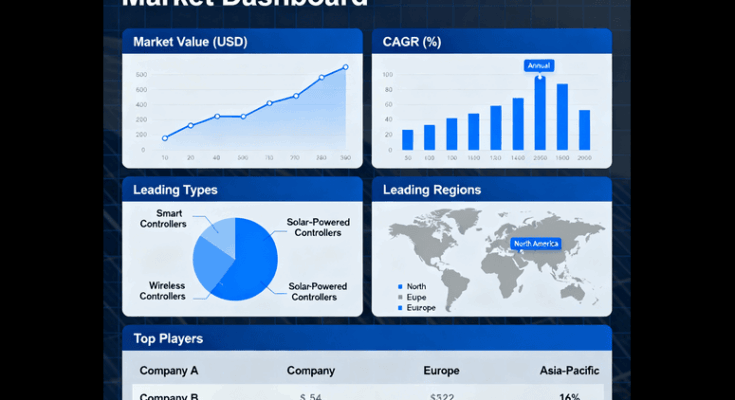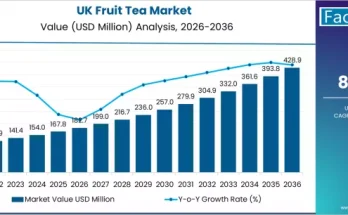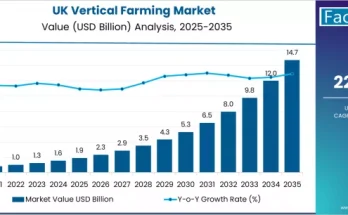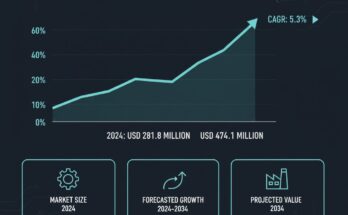The Texture Modifier Market is projected to grow from USD 5,800.0 million in 2025 to USD 8,900.0 million by 2035, achieving an absolute gain of USD 3,100.0 million and expanding at a CAGR of 4.4%. This represents nearly 1.5x growth over the decade, driven by the rising demand for processed food, increasing focus on texture enhancement solutions, and rapid adoption of functional ingredients across global food and beverage sectors. The market’s structural expansion is supported by clean-label trends, reformulation requirements, and technological innovation in hydrocolloids, starches, and protein-based texture systems designed for next-generation food manufacturing.
Market Overview
The global Texture Modifier Market is experiencing significant transformation as food manufacturers seek to balance sensory appeal, nutritional reformulation, and clean-label transparency. Valued at USD 5,800.0 million in 2025, the market is anticipated to reach USD 8,900.0 million by 2035, reflecting a 53.4% total growth. Modern consumers increasingly demand consistent, premium textural experiences, prompting global manufacturers to invest in high-performance food texture systems that ensure stability, consistency, and sensory excellence in processed foods.
Key Market Statistics
| Metric | Value |
|---|---|
| Texture Modifier Market Size (2025) | USD 5,800.0 million |
| Forecast Value (2035) | USD 8,900.0 million |
| CAGR (2025–2035) | 4.4% |
| Leading Type | Hydrocolloids (45.0%) |
| Top Applications | Bakery (30.0%), Dairy, Beverages |
| Key Regions | Asia Pacific, North America, Europe |
| Top Companies | CP Kelco, ADM, Ingredion, Tate & Lyle, Kerry, DuPont, DSM, Cargill |
Market Dynamics
The Texture Modifier Market is expanding due to the increasing demand for processed and convenience foods, along with the growing importance of texture optimization in maintaining product appeal. The clean-label movement is reshaping ingredient sourcing, with manufacturers shifting toward natural and plant-based texture systems. The ability to preserve creaminess, viscosity, and mouthfeel while reducing fat, sugar, or sodium is now central to food innovation.
Between 2025 and 2030, the market will rise from USD 5,800.0 million to USD 7,200.0 million, accounting for nearly 45.2% of total decade growth. From 2030 to 2035, the market will expand by another USD 1,700.0 million, driven by technological integration, formulation diversification, and the rise of plant-based protein foods demanding advanced texture engineering.
Market Segmentation Insights
By Type:
-
Hydrocolloids dominate with a 45.0% share, delivering superior functionality and stability across bakery, dairy, and beverage applications. They ensure reliable performance under diverse processing conditions and remain the backbone of modern texture enhancement solutions.
By Application:
-
Bakery leads with 30.0% market share, as advanced texture modifiers enable dough stability, moisture retention, and structural consistency. Food manufacturers depend on these systems to enhance performance in complex baking processes.
By Form:
-
Powder forms account for 65.0% of total demand, offering extended shelf life, simplified logistics, and efficient integration into automated food processing operations.
Regional Analysis
Asia Pacific dominates global growth, driven by expanding food manufacturing and rising consumption of processed foods in India, China, and Southeast Asia.
-
India grows at a 5.0% CAGR, supported by government-led food processing modernization and domestic demand for functional texture systems.
-
China records 4.8% CAGR, leveraging large-scale production capabilities and emerging texture innovation ecosystems.
-
North America maintains strong demand (4.2% CAGR), with the U.S. leading advancements in texture modification technologies and compliance standards.
-
Europe continues to prioritize premium texture systems, with Germany (4.0%) and France (3.9%) emphasizing precision, performance validation, and clean-label compliance.
Growth Opportunities and Strategic Pathways
Pathway A – Hydrocolloid Leadership (45.0% share):
Hydrocolloids remain at the forefront of the Texture Modifier Market, driving applications that require emulsification, stabilization, and thickening. Estimated revenue potential: USD 4,000.0 million by 2035.
Pathway B – Bakery Application Leadership (30.0% share):
High-volume bakery operations increasingly depend on advanced texture systems for structure and consistency, representing an opportunity worth USD 2,600.0 million.
Pathway C – Asian Market Acceleration:
India and China lead expansion with combined potential exceeding USD 1,700.0 million, driven by localized production, cost efficiency, and growing consumer demand for high-quality processed foods.
Pathway D – Powder Form Premium Segment:
Powder texture modifiers will continue to dominate due to operational efficiency and stability benefits, contributing over USD 5,700.0 million in projected revenue.
Pathway E – Smart Processing Integration:
Manufacturers investing in digitalized processing systems and AI-driven formulation control gain a competitive advantage through consistency, traceability, and scalability.
Competitive Landscape
The Texture Modifier Market is characterized by intense competition among global ingredient leaders prioritizing innovation, sustainability, and reliability.
-
CP Kelco leads with a 13.0% share, focusing on high-performance hydrocolloids and plant-based texturizing systems.
-
ADM, Ingredion, and Tate & Lyle emphasize functional starches and customized solutions.
-
Kerry, DuPont, and DSM invest in protein-based texture systems aligned with clean-label trends.
-
Cargill, Avebe, IFF, and Roquette expand regional presence through formulation innovation and supply chain reliability.
Strategic priorities include R&D investment, technical service networks, and geographic expansion into emerging food processing hubs.
Key Growth Drivers
-
Rising demand for processed and convenience foods.
-
Strong adoption of functional ingredients for reformulation and clean-label compliance.
-
Growing importance of texture engineering in plant-based and alternative protein foods.
-
Integration of smart processing and performance monitoring systems.
-
Continuous innovation in hydrocolloid and starch-based texture solutions.
Market Outlook for Manufacturers and Investors
For manufacturers, the decade ahead presents strategic opportunities to capture premium segments through high-efficiency, clean-label texture solutions.
Investors can benefit from the market’s strong fundamentals—consistent CAGR, diversified demand base, and expanding applications in bakery, dairy, and beverages. Companies capable of combining scientific innovation with processing reliability will establish long-term partnerships with food industry leaders seeking quality assurance and operational stability.
Conclusion
The Texture Modifier Market is set for sustainable growth through 2035, powered by technological innovation, ingredient diversification, and consumer-driven demand for enhanced food experiences. As food manufacturing evolves toward performance optimization and clean-label compliance, texture modifiers emerge as essential enablers of product success, offering manufacturers an indispensable tool for balancing efficiency, quality, and sensory excellence.
Browse Full Report: https://www.factmr.com/report/remote-irrigation-controllers-market



